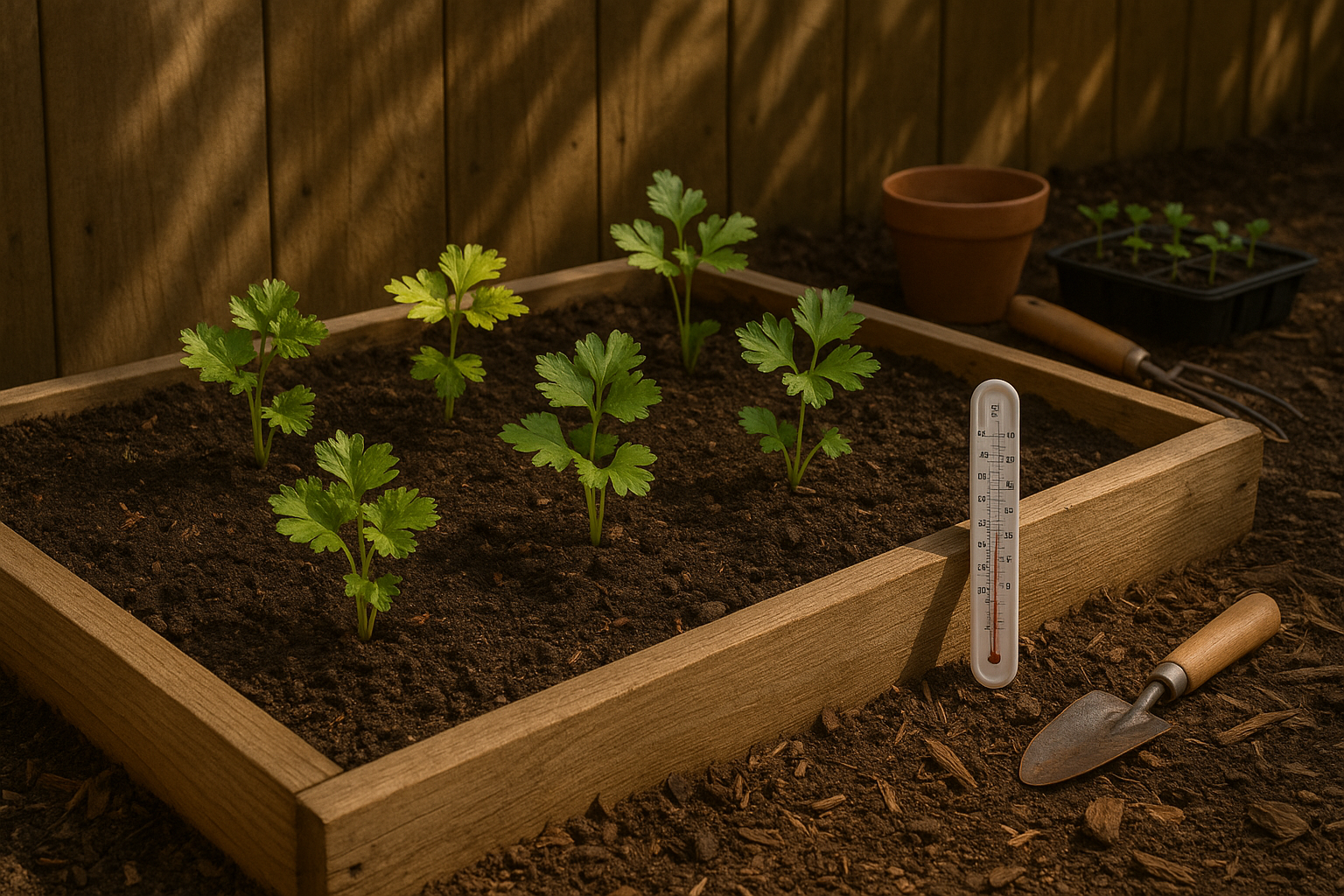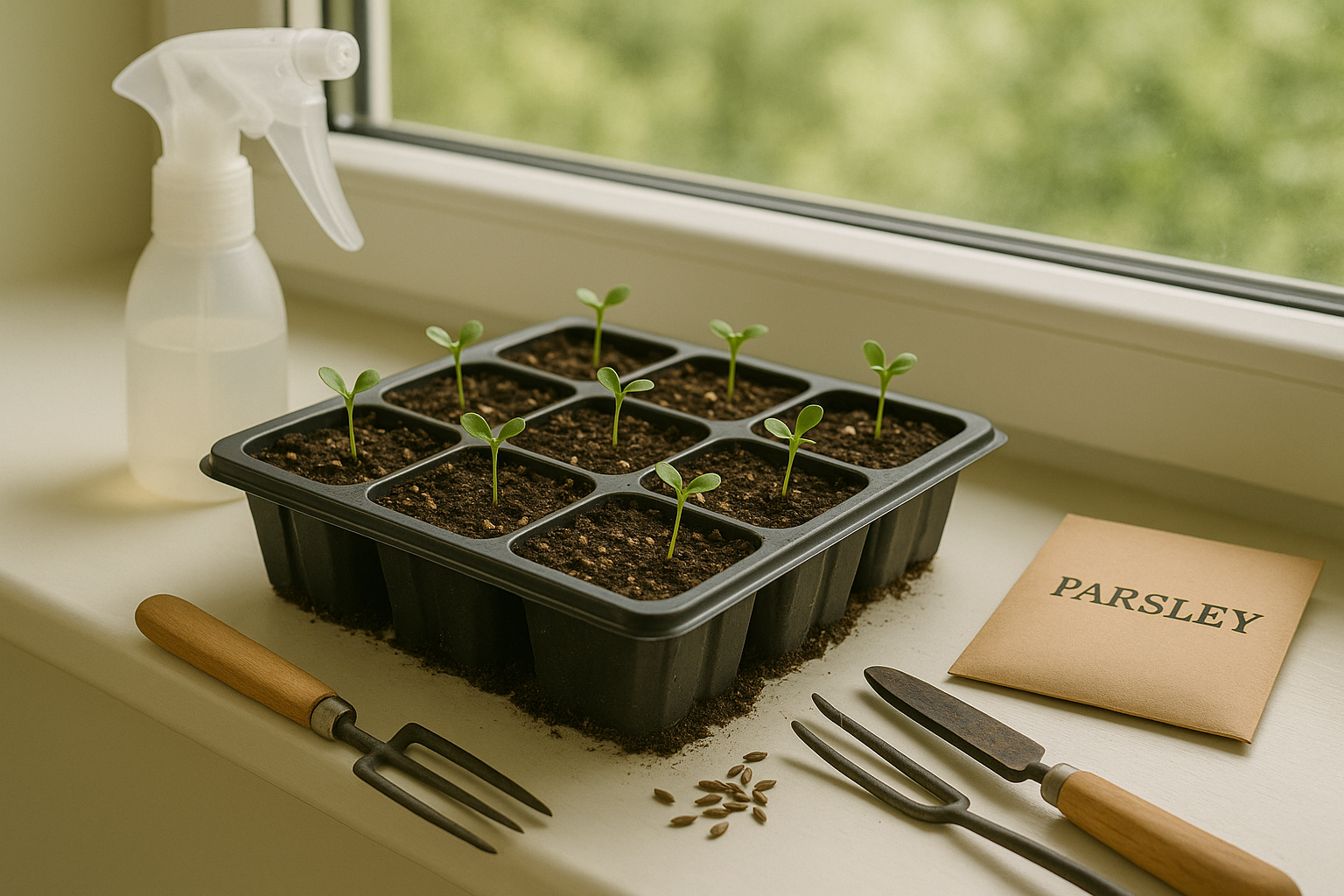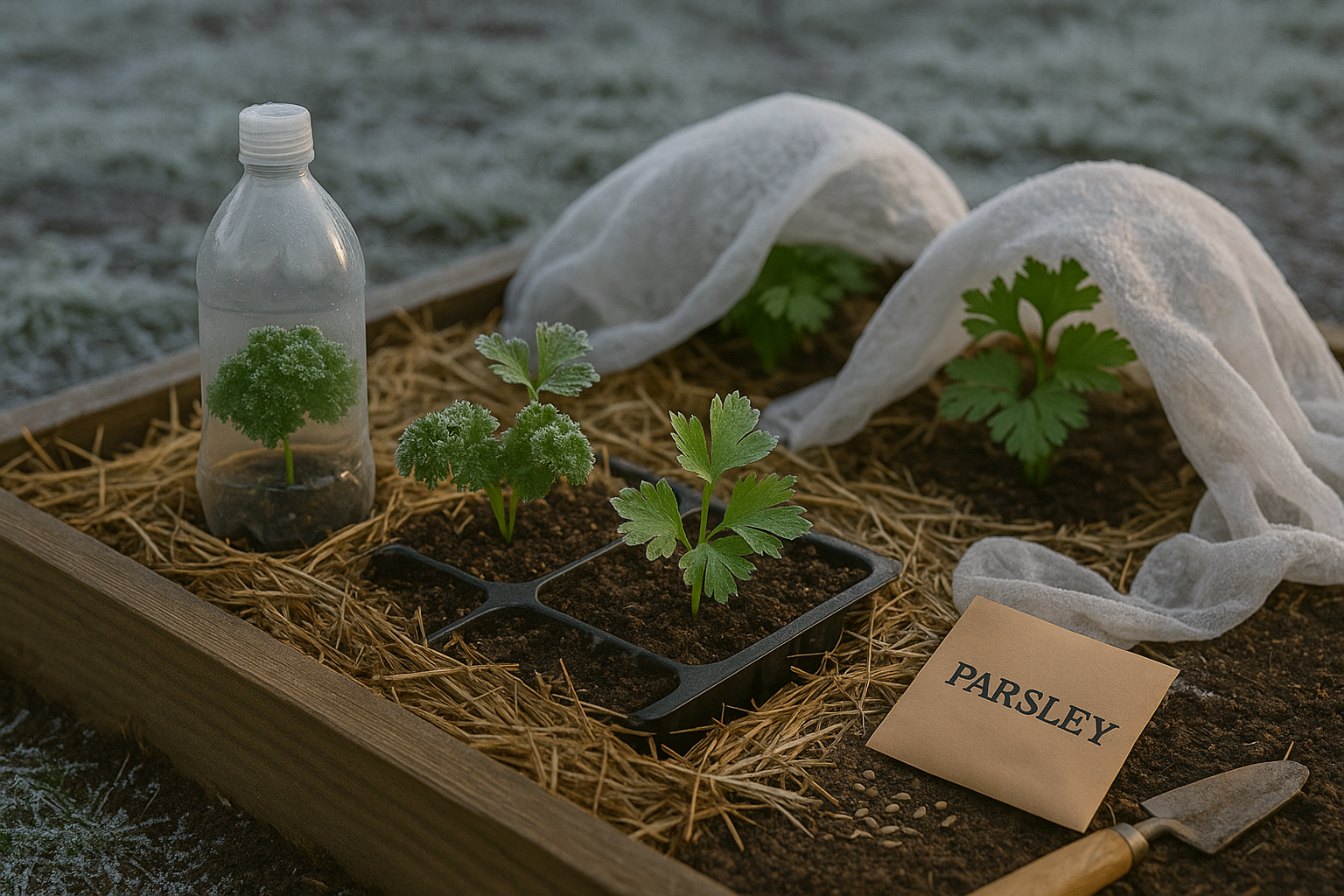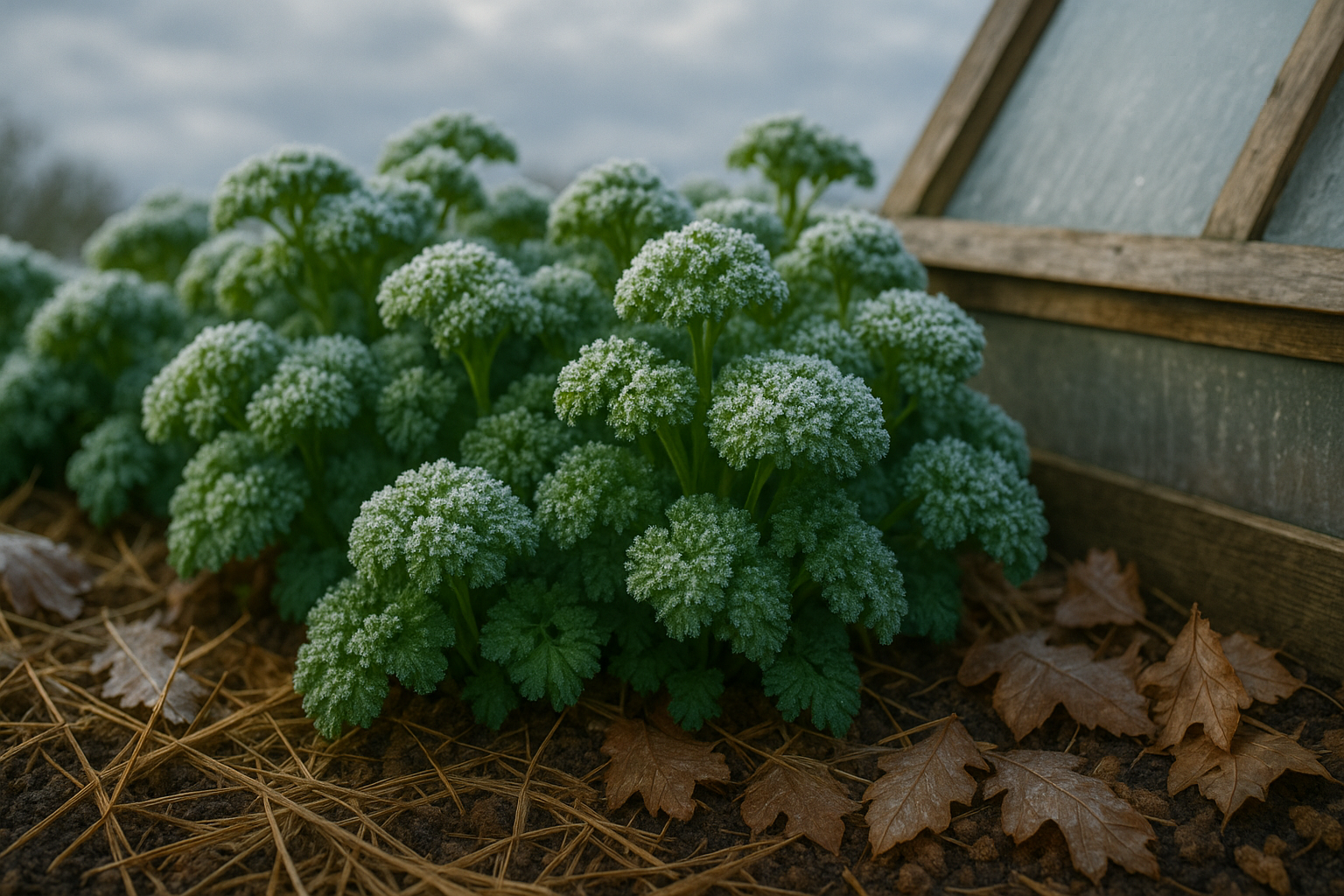Introduction
Parsley cold weather growing is not just a possibility—it’s actually one of the most rewarding ways to enjoy this versatile, nutrient-rich herb year-round. While many gardeners think of parsley as a spring or summer crop, its natural hardiness and adaptability make it surprisingly well-suited to colder climates.
If you love adding fresh greenery and robust flavor to your dishes, you’ll be glad to know that parsley can thrive even when temperatures dip and frost settles in. Still, growing parsley in regions with tough winters comes with its own set of challenges: sudden frosts, shorter daylight hours, and compact growing windows can make even the hardiest herbs struggle to survive.
But with the right approach, you can overcome these obstacles. In this article, we’ll share real-world tips for success—like starting seeds indoors, using protective row covers, or choosing the right parsley variety—to help you extend your harvest long past the first frost.
Whether you’re a backyard gardener or growing on a small balcony, you’ll discover practical techniques for parsley cold weather growing that keep your herb patch lush and productive, even when the world outside feels frozen.
Choosing the Right Parsley Variety for Cold Climates
When growing parsley in cold climates, selecting the right variety can make all the difference in your garden’s winter survival rate. Flat-leaf, or Italian parsley, is often praised for its robust flavor, but when it comes to cold hardiness, curly-leaf parsley tends to be more resilient against frost and blustery winds.
Still, not all parsley is created equal—certain varieties stand out for better winter survival. ‘Moss Curled’ and ‘Hamburg’ parsley are reliable choices for gardeners in northern regions, as they endure chilly temperatures and can sometimes remain harvestable under a light snow. ‘Gigante d’Italia,’ though a flat-leaf type, is another strong contender worth trying.
To boost your odds, always source seeds specifically labeled for cold resistance. Reputable suppliers like Johnny’s Selected Seeds, Baker Creek Heirloom Seeds, and Territorial Seed Company typically carry parsley optimized for tough conditions.
For the best overwintering results with this biennial herb, mulch heavily with straw or dry leaves before the ground freezes to insulate the roots and extend the harvest window. If you’re using raised beds or containers, push them together for extra shelter or cover the plants with a cold frame or hoop tunnel.
Many gardeners also sow a late fall crop, letting seedlings overwinter for super-early spring greens. These simple steps and smart variety choices can transform parsley from a short-season annual into a nearly year-round staple, even in areas where winter tries its hardest.
When and Where to Plant Parsley in Cold Regions

For gardeners in cold regions, timing and placement are key when it comes to growing parsley. The best planting windows are early spring—once the soil can be worked and daytime temperatures consistently rise above 50°F—and again in late summer, typically 6-8 weeks before the first expected frost, to ensure a fall harvest.
Parsley prefers well-draining, rich soil. Mix in plenty of compost or aged manure to help seedlings establish strong roots. Choose a sunny location that receives at least 6 hours of light per day; if possible, pick a spot with some afternoon shade to protect delicate plants from sudden temperature swings.
Raised beds and containers warm up faster in spring and offer better drainage, making them ideal for gardeners dealing with heavy or clay soils. In colder, windier areas, planting along a south-facing wall or near a fence can provide extra shelter and warmth, helping parsley withstand chilly nights.
For an extra head start, begin seeds indoors about 6-8 weeks before your last frost date. Use a seed-starting mix and keep trays in a bright window or under grow lights to encourage strong, compact growth. This approach not only ensures an earlier harvest but also helps avoid unpredictable spring weather and allows young plants to acclimate gradually when transplanted outdoors.
By paying attention to timing and creating a microclimate with good soil and strategic placement, you can enjoy lush parsley even where the growing season is short.
Starting Parsley from Seed for Best Results

Starting parsley from seed at home can test your patience, but the rewards are well worth it. Parsley seeds are famously slow to germinate, often taking up to three weeks to sprout due to their tough outer coating. To speed things along, try soaking the seeds in warm water overnight before planting—this softens the shell and encourages quicker growth.
For the best results, start seeds indoors about 8 to 10 weeks before your last expected spring frost. Use trays or small containers filled with damp seed-starting mix, and keep them in a warm spot—around 70°F (21°C) is ideal. Cover seeds lightly with soil since they need darkness to germinate, and mist regularly to keep the mix moist but not soggy.
Once seedlings have developed a couple of true leaves and outdoor nighttime temperatures remain consistently above freezing, ease them into outdoor life by gradually exposing them to direct sunlight over the course of a week. When transplanting, be careful with the roots; parsley doesn’t like too much disturbance. Carefully remove seedlings and place them into prepared garden soil or pots, spacing them about 8 inches apart.
If your region has a long, cool spring, direct-sowing might work, but in areas with unpredictable last frosts or short growing seasons, starting indoors gives you a head start and better success rates. Either way, patience and gentle handling are key—a little extra care now means fresh, flavorful parsley all season long.
Caring for Parsley in Cold Weather

When caring for parsley through cold weather, a few practical strategies can help keep your herbs thriving even as temperatures drop. Start by managing soil moisture—water less frequently, but be sure the soil doesn’t completely dry out, since winter winds can quickly dehydrate exposed roots. A layer of organic mulch, like straw or shredded leaves, helps insulate roots and retain moisture.
Check soil drainage regularly because soggy soil can lead to root rot. Slightly raised beds or containers often work well for this purpose. When it comes to feeding parsley in winter, adjust your approach: stop heavy fertilizing after late summer, but apply a light feeding of slow-release organic fertilizer in early fall to sustain the plant without encouraging lush, frost-sensitive growth.
Protecting parsley from biting winds and harsh frosts is essential. Use cloches (recycled plastic bottles can work in a pinch), woven row covers, or even an extra thick layer of mulch around plants on especially frigid nights.
Keep an eye out for signs of temperature stress. Parsley leaves may yellow, curl, or turn translucent around the edges when exposed to extreme cold. If you notice these symptoms, move container-grown parsley to a sheltered spot, remove damaged leaves, and increase protection.
With these cold-weather care tips, you can enjoy fresh parsley through much of the winter—just remember that a little prevention and regular monitoring go a long way toward keeping this hardy herb productive when temperatures plunge.
Harvesting Parsley Year-Round
Harvesting parsley throughout the year—even in cold climates—takes a bit of planning, but it’s well worth the effort for a steady supply of fresh herbs. To encourage continuous growth, always snip the outer leaves first, starting with the larger, mature stems, and leave the inner shoots intact so the plant can keep producing.
Harvest regularly—every couple of weeks—rather than waiting for a big crop.
As autumn approaches and nighttime temperatures dip, protect your parsley with a cloche, cold frame, or even an upturned clear storage bin to create a mini greenhouse effect. In areas with shorter winters, mulching the plants heavily with straw can insulate roots and help them overwinter outdoors.
For those facing harsher climates, dig up a few plants in late fall and replant them in pots indoors on a sunny windowsill, where they’ll keep growing if kept moist.
If you end up with more parsley than you can use fresh, rinse and pat the leaves dry, then either:
- Chop and freeze them in ice cube trays with a bit of water or olive oil, or
- Dry whole sprigs upside down in a cool, dark place and crumble into jars for easy seasoning all winter long.
Common Problems and Solutions for Parsley in Cold Climates
Growing parsley in cold climates often presents challenges like slow germination, frost damage, and unwelcome pests. If your parsley seems sluggish, don’t worry—it’s normal for growth to stall when nighttime temperatures dip below 50°F. To speed things up, start seeds indoors about six weeks before your last expected frost, or use a cold frame outside for added warmth.
Frost can singe leaves or kill young seedlings outright, so cover your plants with row covers or an old sheet during unexpected cold snaps. Raised beds can also help soil warm more quickly in spring. Pests like aphids and slugs may linger even in chilly weather; check leaves regularly and remove pests by hand or with gentle, soapy water.
If leaf tips turn black or plants go limp after a freeze, wait a few days—parsley often rebounds once temperatures climb. However, if the majority of stems are mushy and brown, it’s time to pull and replant. Mulching heavily around roots keeps temperatures steady and helps parsley survive surprise cold spells.
By combining these strategies, you’ll give your parsley its best shot at thriving, even during the toughest winters.
Conclusion
Growing fresh parsley year-round is easy with the right care—whether you use outdoor garden beds, containers, or a sunny kitchen windowsill. Rotate plantings to ensure a constant supply, keep the soil moist but not soggy, and pinch stems regularly to encourage bushy growth.
Don’t hesitate to mix parsley with other winter-hardy herbs like sage, thyme, or chives for flavorful and attractive herb beds. Try new recipes or sprinkle chopped leaves on everything from salads to soups to add a burst of freshness.
With a little ongoing attention and creativity, you’ll enjoy homegrown parsley through every season.
